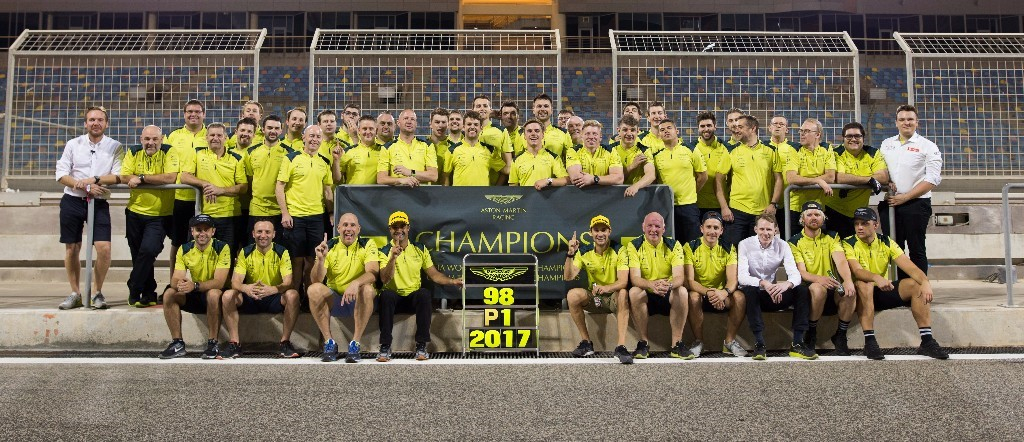
For the third in our series on the endurance racing history of our manufacturer partners, we look at famous British marque, Aston Martin.

Aston Martin’s history at the Le Mans 24 Hours can be traced all the way back to 1931, although it wasn’t until the mid-1950s that the British marque became a major player in endurance racing.

After years using modified road machinery, rule changes allowed Aston Martin to debut its first bespoke prototype, the DBR1, in 1956. Poor reliability plagued it at first but, by 1959, it had become a winner, taking not only outright victory at Le Mans but also that year’s World Sportscar Championship title.
Aston officially quit sportscars to focus on Formula 1 the following year, and after a couple of unsuccessful years in Grand Prix racing it returned to Le Mans in 1962 with the DP212. It couldn’t recapture its earlier success with its GT-based design, however, or with its successors, and withdrew again after 1964.
The next official Aston Martin endurance racing project didn’t materialise until the late 1980s, as the company embarked on a Group C project following on from toe-in-the-water efforts as engine suppliers to the Nimrod and EMKA teams earlier in the decade.
.jpg)
Aston entered the full 1989 WSC season with the all-new AMR1, but it was not a success, managing a best finish of fourth all year. Two cars were also entered at Le Mans, the best of which finished 11th. An all-new design, the AMR2, was planned for 1990, but never raced before the project was cancelled.
Financial trouble resulted in Aston Martin disappearing from endurance racing once again for 15 years, until it formed an alliance with Prodrive to create a racing version of the successful DB9 road car.

The DBR9 was an immediate hit, winning its class in the Sebring 12 Hours in 2005, but it wasn’t until 2007 that it overcame its arch-rival in the GT1 class, Corvette, to take class honours at Le Mans. It defended its title in 2008 before Aston chose to take on Audi and Peugeot in the LMP1 class.
However, the petrol-powered, Lola-built B09/60 was never a match for its diesel rivals, and after the failure of the bespoke AMR-One prototype in 2011, Aston returned to the GT ranks in 2012 to become one of the reborn FIA World Endurance Championship’s stalwart makes with the Vantage GTE.
.jpg)
It scored GTE Am drivers’ titles in 2013 and 2014, and in 2016 it beat works opposition from Ferrari and Ford earn the GTE Pro title. Further class wins at Le Mans also followed in 2014 in the GTE Am class and then in 2017 after a thrilling contest in GTE Pro, in what proved the venerable Vantage’s final year.